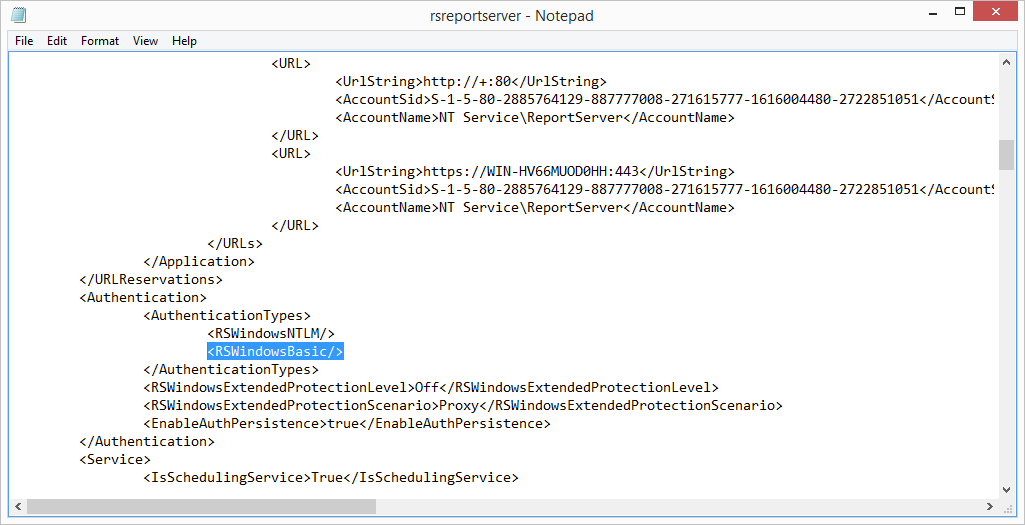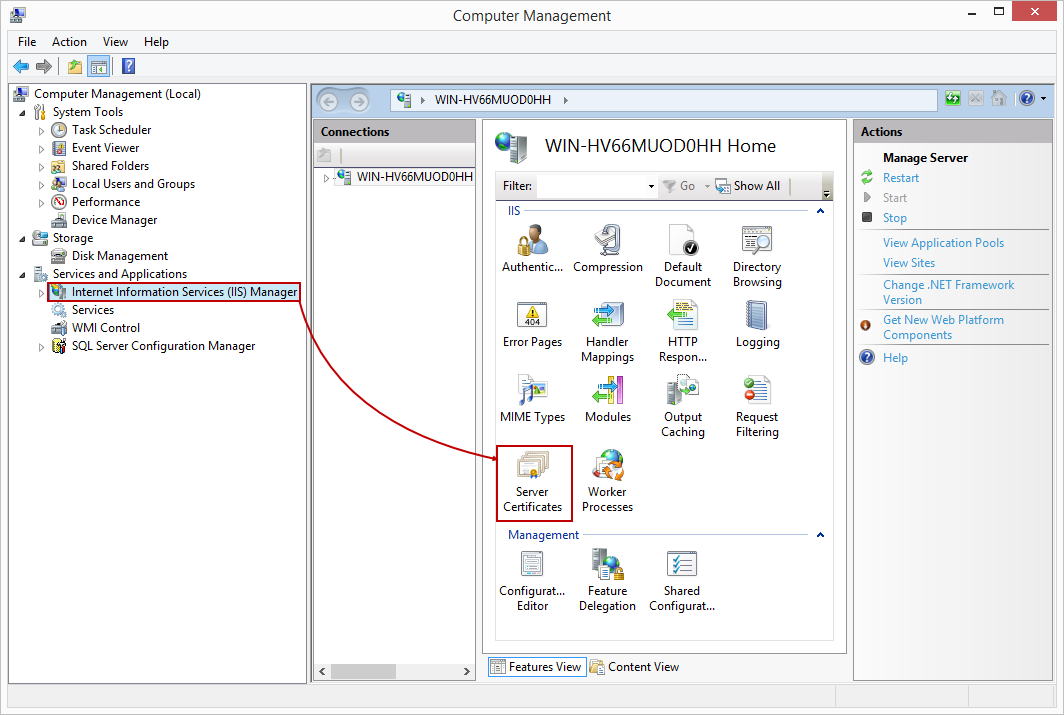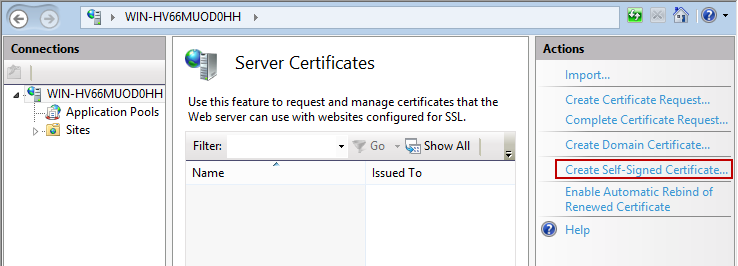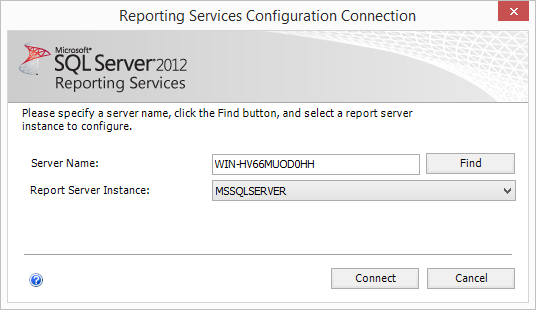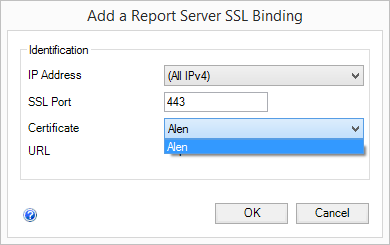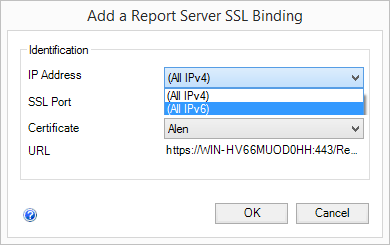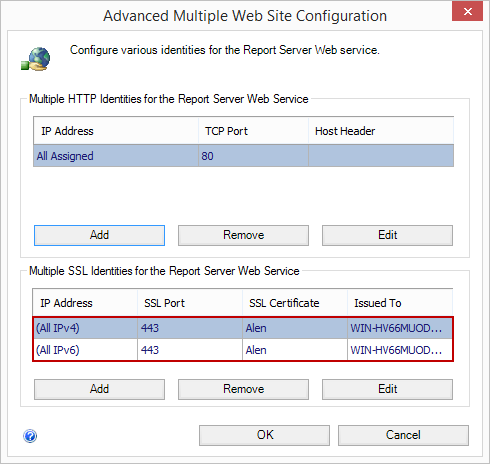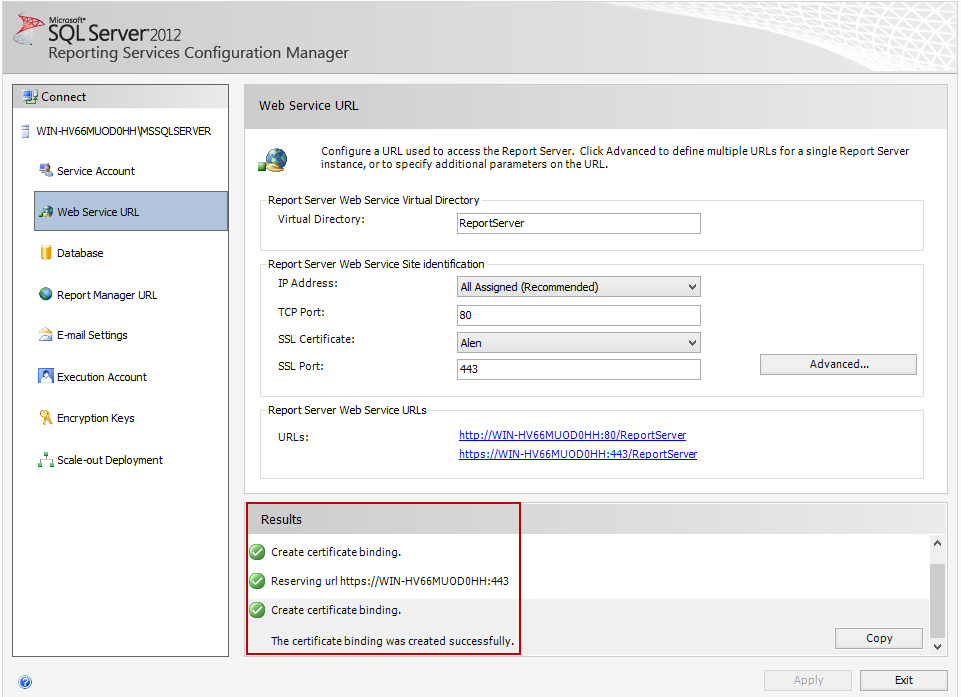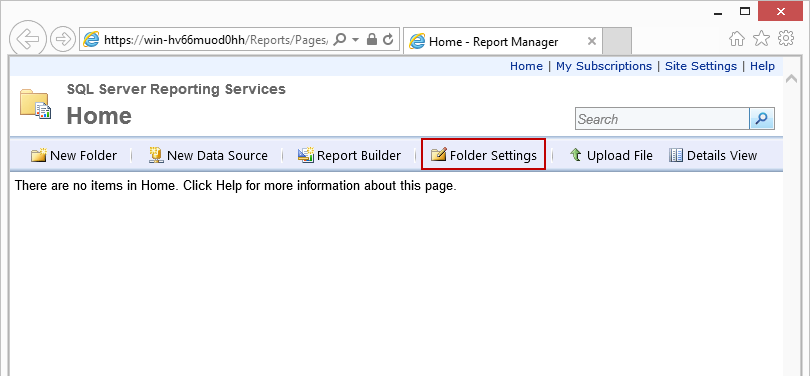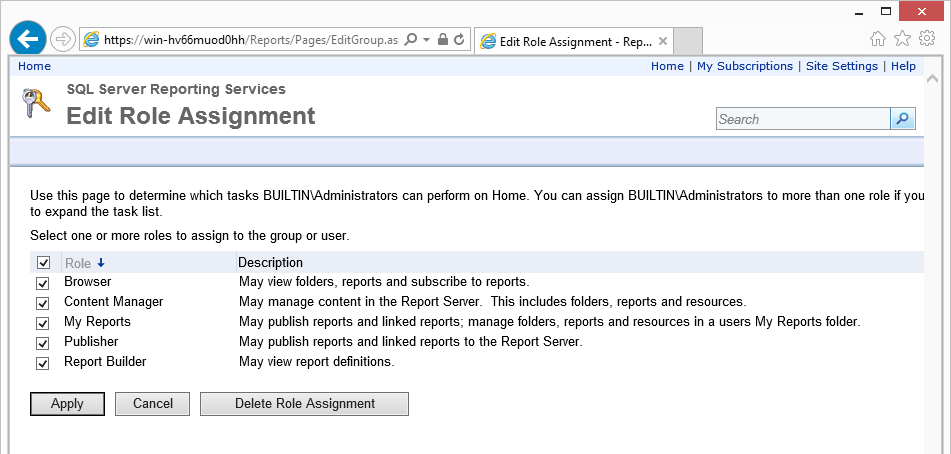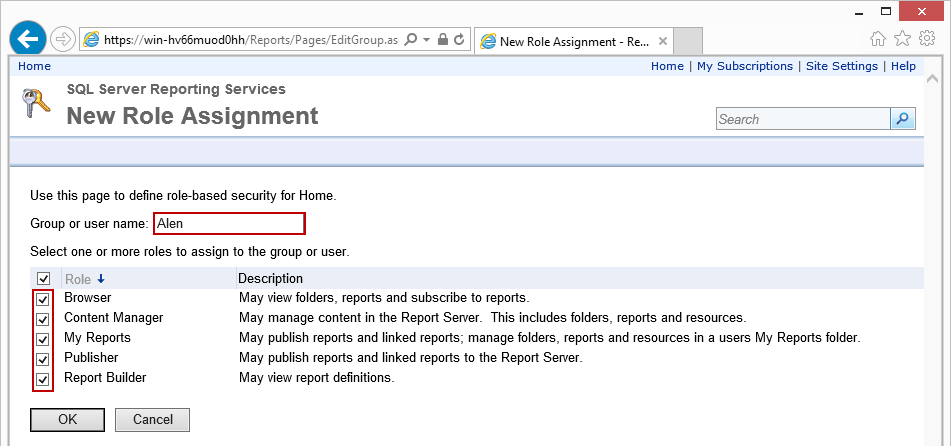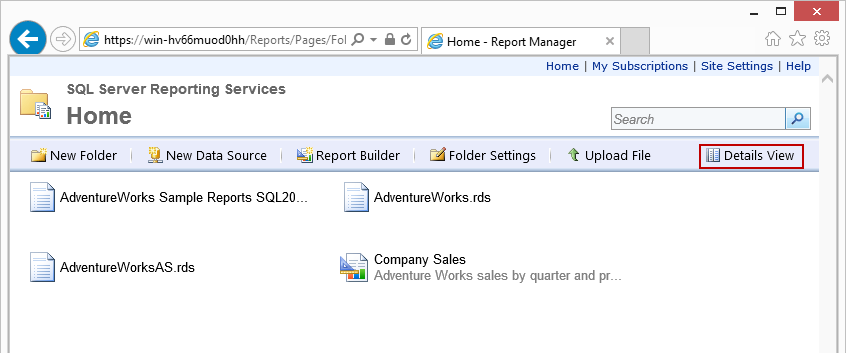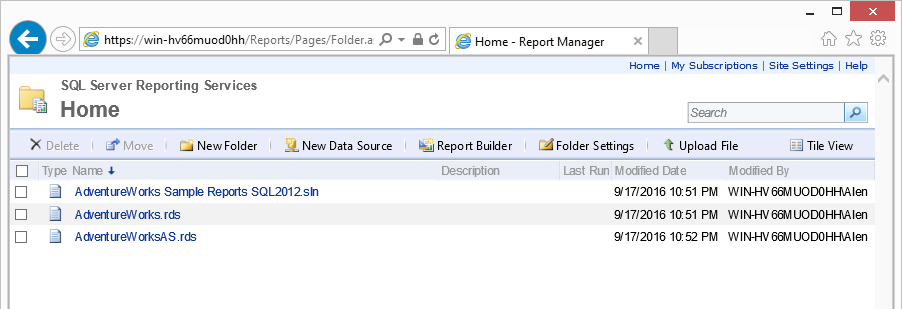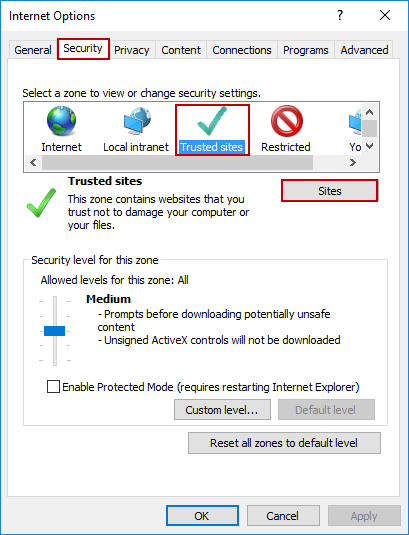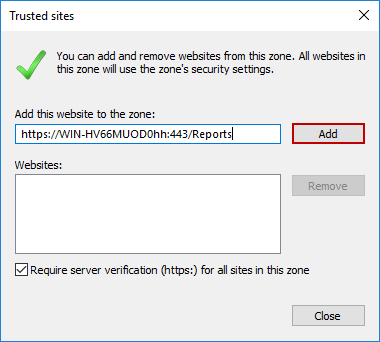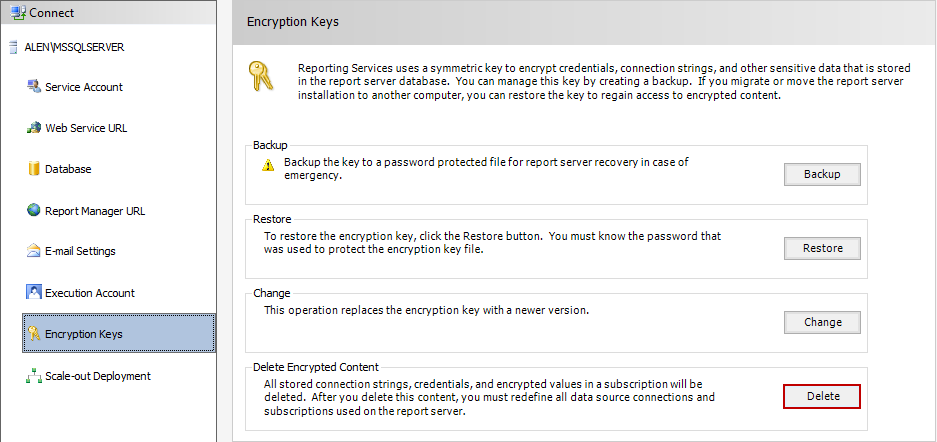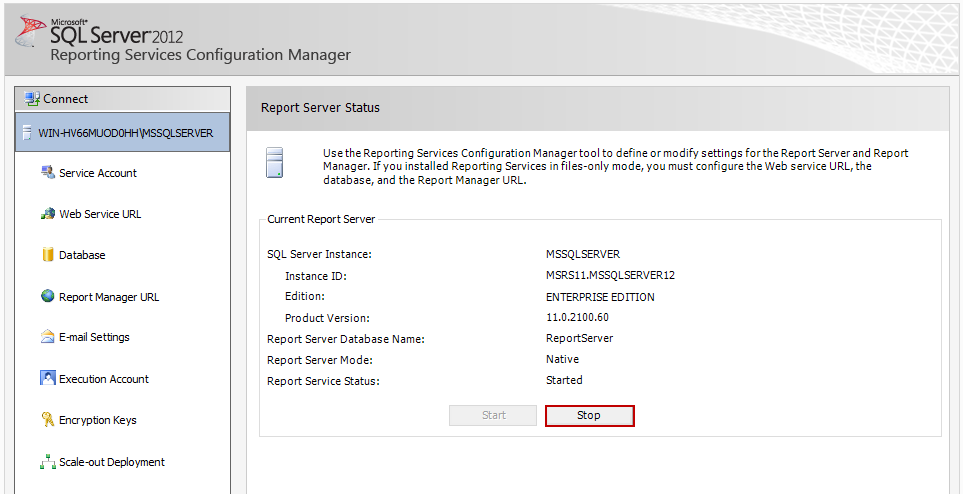In SQL Server Reporting Services Native mode, a report server has a role of a standalone application server, that provides all viewing, processing, delivery, and management of reports and report models. This is the default mode for SSRS instances.
To set up SSRS Native mode on your local machine follow the instructions below:
First, go to the following location:
C:\Program Files\Microsoft SQL Server\<your MSRS>\Reporting Services\ReportServer\
Then find the file rsreportserver.config XML file and open it. In that file find the <AuthenticationTypes> section and ensure that <RSWindowsBasic/> element exists. If it doesn’t, add it manually and save the file.
Next, open Windows features, make sure Internet Information Services and Internet Information Services Hostable Web Core are turned on, click OK and wait for the changes to be applied.

Then open Computer Management, go to Internet Information Services (IIS) Manager and double click the Server Certificates option.
Once opened, a new menu will appear. Click the Create Self-Signed Certificate option in the Actions pane on the left.
Specify a friendly name for your certificate, select a certificate store for the new certificate, and click OK.

Afterwards it will be visible it in the list below:
Open Reporting Services Configuration Manager and connect to your Reporting Services Server instance.

Once connected select Web Service URL tab, change the SSL Certificate to the certificate you created in step 5 and click the Advanced button. If you are using Reporting Services Configuration Manager for SQL Server 2016 this option will be shown as HTTPS Certificate.
When that is clicked, a new menu will appear where you have to add a new SSL binding. Now click the Add button, like in the picture below.

Now add a IPv4 address with your created certificate and click OK.

And also add a IPv6 address with your certificate, by repeating step 9 and selecting the All IPv6 option.

After you’ve added both bindings, they should be visible in a grid below. Now click OK.

Now wait out certificate binding process and when it’s complete, you should get the following results.
Now select the Report Manager URL tab and click Advanced. If you are using Reporting Services Configuration Manager for SQL Server 2016 this tab will be visible as Web Portal URL.
Then, another menu will appear where you have to repeat step 10 and 11 to add SSL bindings and click OK.

Open a browser which supports SSRS Native service, as administrator and paste or click the second link from Report Manager URL tab. This could take a few minutes to load.
When the page is successfully loaded, click Folder Settings and another page will open.
Now, click the Edit option like in the picture below and then you will edit the role assignment options.
Check all desired roles which you want to assign to a group or a user and click the Apply button.
Now click New Role Assignment option.
Enter a new Group or user name, check all desired roles and click OK.
Now click the Site Settings link, on the upper right corner of the page, then go to the Security tab and repeat steps 18, 19, 20, and 21 (edit Admin user and check all roles, then create a New Role Assignment, create new user, check all roles and confirm).
Now you can open the link from step 16 or click the Home link and create or add your SSRS items to Native web service.
Once you have uploaded some SSRS items they will be visible in the filed below and you can manage them with the Details View option.
Troubleshooting:
If you are having trouble connecting to the SSRS Native service through the web browser because the message says that the service is unavailable, there are a few troubleshooting options, you should try:
Option 1.
Open your web browser with administrator privileges
Once the browser is open, click the Internet options setting.
Go to the Security tab, click Trusted sites and then click the Sites button like in the picture below:

Once the Sites button is clicked, paste the second link from Report Manager URL tab to the filed shown below and then click the Add button. Once that is set up, paste the link again to the browser press Enter.

Option 2.
-
Open Reporting Services Configuration Manager, go to the Encryption keys tab and click the Delete button for the Delete Encrypted Content option.
Go the server tab, stop the SSRS service and start it again. Then paste the link from the Report Manager URL again to the browser press Enter.
Useful resources
- Install Reporting Services native mode report server
- Verify a Reporting Services Installation
- Report Server Content Management (SSRS Native Mode)
- What is a SQL Server Data Dictionary and why would I want to create one? - December 26, 2016
- How to configure reporting services (SSRS) for Native mode - September 21, 2016

